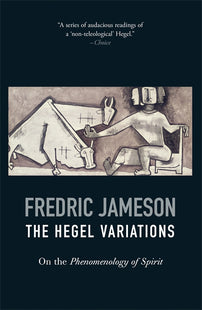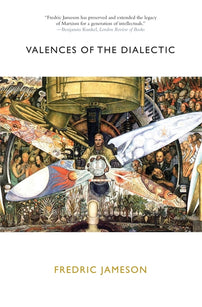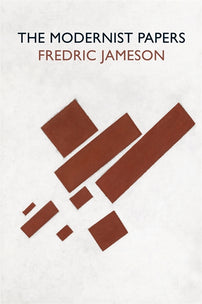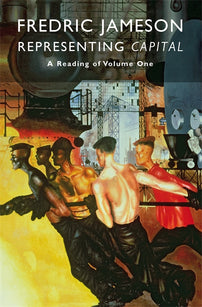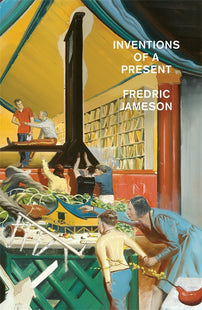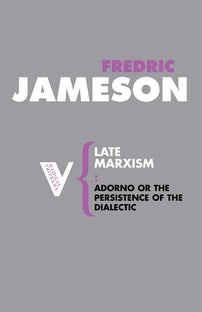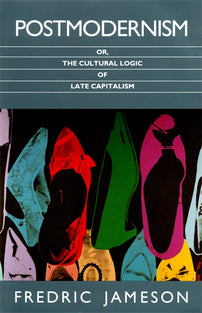The Rebus in Fredric Jameson’s The Hegel Variations
Andrew Cole revisits Fredric Jameson's The Hegel Variations through notes he took as a graduate student in Jameson's seminars for our Jameson at 90 series.

Fredric Jameson is my teacher but, in the 1990s, he was my professor in graduate school, and someone we students could call “Fred.” Here I’m going to reflect on The Hegel Variations, which sits under the master signifier, “Jameson,” but I will also describe what can be learned about this book from the seminars offered by Fred.
You see, from 1995-2000, I attended every seminar Fred ran. Recently rereading Jameson’s The Hegel Variations to prepare for this celebration of his 90th birthday, I realized that his seminar entitled, “The Dialectic” (spring 1996), presented the bulk of his thinking for this very book, to be published some sixteen years later in 2010. I have, as they say, copious notes documenting this fact.
Why I will speak of “Fred” and “Jameson,” in turns, comes down to math. Two and a half hours of Fred lecturing on Hegel (sans the ten-minute smoke break in the Art Museum vestibule), over the course of seven seminars, totals about sixteen hours of spoken material about the German idealist, a sum that far exceeds the time it takes to sit and read Jameson’s slim The Hegel Variations. Point is, I have my own Hegel variations, by way of a variant corpus comprised, on the one hand, of my notes on Fred’s words about Hegel and, on the other, Jameson’s resulting volume. I’m not embarrassed to admit that I read Jameson’s books through the lens of Fred’s lectures, and I shall do so here in a way that permits me to commit an intransigent spatialization of both The Hegel Variations and the Phenomenology of Spirit.

[Figure 1]
It may be best to approach The Hegel Variations by way of Jameson’s “structural reading” (126) of the Phenomenology of Spirit. This reading began in the seminar on January 22, 1996, when Fred circulated a photocopy of the table of contents to Hegel’s text from A.V. Miller’s translation.[1] He asked us to eyeball the handout as he pointed to blocks of material. Bracketing off the chapters entitled Consciousness, Self-Consciousness, and Reason as a cluster, he spoke of the “education of [the] individual to [the] collective individual” [fig. 1]. Then directing our sight to the next segment, he explained that (BB) Spirit, “retraces this movement” [fig. 1] with the proviso that—as we learn in The Hegel Variations—Spirit or Geist means the “social collectivity” (14).
[book-strip index="1"]
Looking back, I summarize. In the first cluster of chapters there is a subject alone in a world of objects futilely attempting various empiricisms and realisms to know the world and understand nature; then the subject enters into a belligerent encounter within another single subject and learns a thing or two about desire, recognition, and intersubjectivity; and, finally, that same subject get embroiled in situations populated with multiple others, summed up in one vignette as “the way of the world” (228ff), and in another as “others [who] hurry along like flies to freshly poured out milk,” wanting “to busy themselves” with your affairs (251 [§418]). This is a first run-through in positing the universality of individuality, but it’s not yet collectivity.
And so, Hegel “retraces this movement,” per Fred. In the second cluster, (BB) Spirit, Hegel explores various collective forms. It’s here that the individual experiences similar episodes as before, only this time each is more socially dense, portraying ethical, legal, political, and moral institutions with such completeness and reach that it’s hard to know just where the individual begins and where the collective, for which a given institution speaks, ends. Which is, as we learn, both a good and bad thing, and a problem for political theory evermore.
Yet we also learn that, as Jameson came to discover in The Hegel Variations, that the Phenomenology of Spirit itself ends right here—with his suggestion that everything after, namely, the chapters entitled (CC) Religion and (DD) Absolute Knowing, falls outside the philosophical work (44, 104, 113). The former looks like a “virtually self-complete chapter” (117) in its quest to explain this thing called “picture-thinking” or Vorstellung across religions. And the latter is a summary of the whole book but with all the drama of a degassing foam.
With his bold suggestion to toss (CC) Religion and (DD) Absolute Knowing, Jameson tears apart the Phenomenology of Spirit as a codex, which many will feel is nice for someone else to do for a change, while at the same time making a neat dialectical Twosome out of the book’s two most widely read sections. His “structural reading” is very persuasive.

[Figure 2]
But let’s return to Fred’s seminar and his handout of the table of contents. Here I am relying on Fred to chart another path through Jameson’s The Hegel Variations, one in which (CC) Religion rejoins the Phenomenology of Spirit precisely on account of its discussion of “picture-thinking” or Vorstellung, thus completing a proper triptych that expresses a paradigm for spatial reading, analysis, and critique.
To begin with, in the seminar Fred proposed a heuristic that Jameson doesn’t pursue in The Hegel Variations. Here’s what I recorded: “Table of Contents: Each chapter with a different basis, and book can be construed as a collage of discontinuous materials. Words / things / elements / documents / thoughts like Freud’s rebus: dream objects side by side which subject tries to put into a single language” [fig. 3]. Here, obviously, Fred is channeling Freud.
[book-strip index="2"]
News is that Freud was well-acquainted with people’s dreams and decided that the “rebus” or “picture-puzzle” was the best way to characterize in his Interpretation of Dreams the nonsense people reportedly dreamt. As a weird dreamer himself (“Irma’s injection” and all…), he knows that sometimes you wake up and can’t describe what you just dreamt, because your dream…:
depicts a house with a boat on its roof, a single letter of the alphabet, the figure of a running man whose head has been conjured away, and so on…. A boat has no business to be on the roof of a house, and a headless man cannot run. Moreover, the man is bigger than the house; and if the whole picture is intended to represent a landscape, letters of the alphabet are out of place in it since such objects do not occur in nature. But obviously we can only form a proper judgement of the rebus if we put aside criticisms such as these of the whole composition and its parts and if, instead, we try to replace each separate element by a syllable or word that can be represented by that element in some way or other.[2]
With Fred’s Freud, we might say that Hegel’s table of contents confronts us, first, as a dream or rebus, a perplexing sign of what’s to come, “a collage of discontinuous materials,” “words / things / elements / documents / thoughts.” It’s here that we act as Freud’s analyst, lighting our calabashes to help the analysand—ourselves?—translate Hegel’s seemingly endless spatially disordered dream-image into ordered commentaries.
But, I claim, we should be careful not to over-write the rebus, and, by this, I mean not expand into too many words Hegel’s own spatial ideations across all the “shapes” of consciousness presented in this self-proclaimed construction, this “gallery of images” (492 [§808]). Rather than translate the disordered dream-image into ordered words, the visual into the verbal, we might enter into its own spatial logic and let the rebus just be the rebus.
It’s here that it can be noted that the rebus is primarily a spatial image and can only be defined by talk of disorientation, depicting impossible spatial logics and confusing spatial relations. So, the rebus is exactly the image of Hegel’s thought, an eldritch space in which you cannot make heads or tails of what’s being said (à la Adorno[3]) or, as much, of what’s being illustrated or pictured when Hegel commits “picture-thinking” or place making. In Hegel, however, I insist we reject his devaluation of spatial thinking[4] or figurative practices,[5] and can’t let the forest of words obscure the picture of trees—not letting language totally discursivize space, but that’s an issue for another discussion.[6]
[book-strip index="3"]
It’s Fred’s birthday, so let’s fête his Freudian idea and read Hegel’s entire book as a gallery of rebuses. This means raising a toast to all the places where Vorstellung breaks in on Darstellung long before the chapter (CC) Religion explores and codifies the former. In other words, with thanks to Fred, I propose a modification of Jameson’s reading: (CC) Religion, preoccupied as it is with Vorstellung, may not be an “enormous supplement” (116) but rather a necessary reflection on all prior spatialized thought-modes, training us up in the ways of capacious critique.
Fred in his seminar captured, albeit briefly, this alternative reading when he pointed to the handout and spoke of (CC) Religion, which (in my laconic scribbling) “retraces through religion, in the images that register this process” [fig. 2]. He spoke of “retracing” to strike a parallel between (BB) as itself “retracing” the previous chapters and (CC) doing something of the same in the way it “register[s]” most of the foregoing episodes of the Phenomenology of Spirit. (CC) Religion does what (BB) Spirit does, but with an aesthetic commitment to spatial media.[7] Here we have the place of critique, as Jameson proposes (127-29), but also, I suggest, a culmination of its specifically spatial mode in (CC) Religion, which we can now duct-tape back to the riven codex that is the Phenomenology of Spirit.

[Figure 3]
It's important to affirm that our experience of the rebus that is Hegel’s Phenomenology of Spirit is relevant to the critique of globalized (spatialized) late capitalism. That’s a heavy lift, but remember, very early in The Hegel Variations Jameson says that Hegel offers “a new dimension of thinking, called [the] speculative” (9). Yes, I glommed onto “dimension” as a spatial term, but I’ve come to feel that no such word is aleatory in Jameson’s work since his Sartre book of 1961, nor is such a metaphor inappropriate in a world space dominated by labor time, nor in the period after Herbert Marcuse’s “one-dimensional man” for whom critique is pinched into a single point lacking extension, zero space whatsoever. No spatial image is inapposite when beholding a capitalist colonial brutality that, as Frantz Fanon teaches, keeps too many in their place, without space to breathe or move, and in which freedom and independence are fully expressed as a dialectic of space and not as something-something temporality.
To wit: what I like most about The Hegel Variations is that Jameson does a real number on time, chronology, teleology, Bildungsroman, priority, and succession such that Hegelian temporality isn’t really so straightforward anymore and is itself—on my view—a rebus, an image of disorder (15-17, 27-28, 30, 43, 50, 71). Yet why is time under so much stress? Jameson doesn’t gather up his observations into a single claim about the (a)temporal features of the Phenomenology of Spirit, and I don’t see that Fred did either in his seminars.
[book-strip index="4"]
So, allow me. Could it be that space disorders time and that we, as creatures incessantly banging on about temporality, fail to notice?
This is my provocation. No one in the field of dialectics, so far as I know, reckons with the distinct asymmetry between space and time in a way Hegel asked us to do in his Philosophy of Nature and which we see exemplified today in everything from particle physics, to novels, to transcontinental art installations. As theorists, we might jargonize less about “multiple temporalities” (itself a facile synonym for space that prioritizes time anyway) and instead address how time is reduced to space, emerging as a temporal fiction indistinguishable from the ideologies of late capital. Time deserves the short end of the stick, and Marx’s dictum of capital that “space must be annihilated by time” must now be reversed.[8] We should instead declare, as Marxists, that time must be annihilated by space.
See all works by Fredric Jameson here. His new book, Inventions of a Present: The Novel in its Crisis of Globalization is out on May 7.
[book-strip index="5"]
[1] G. W. F. Hegel, Phenomenology of Spirit, trans. A. V. Miller (Oxford: Oxford University Press, 1977).
[2] Sigmund Freud, The Interpretation of Dreams, trans. James Strachey (New York: Avon Books, 1968), 312.
[3] See Theodor W. Adorno, “Skoteinos, or How to Read Hegel,” Hegel: Three Studies, trans. Shierry Weber Nicholsen (Cambridge: MIT Press, 1993), 89.
[4] Contrast Jameson’s correct observation that Hegel “wishes systematically to unmask and to denounce the attempt to think the thought of reality in terms of what we may call spatial thinking” (The Hegel Variations, 47) with his later discussion of the spatializing processes of dialectical expansion in globalization (115 esp. but see 15, 23, 83).
[5] For a way to do this, see my “How to Think a Figure; or, Hegel’s Circles,” Representations 140 (2017): 44-66.
[6] See my “The Dialectic of Space: An Untimely Proposal,” South Atlantic Quarterly 119:4 (2020): 811-32, and especially my suggestion for reading a spatial image in Hegel’s “Sense-Certainty” (821-22).
[7] Jameson’s discussion of (CC) Religion in his tenth chapter, “Religion as Cultural Superstructure,” is the most rebus-minded of his entire book; see esp. The Hegel Variations, 117.
[8] Marx, [Grundrisse,] “Economic Manuscripts of 1857-58,” Marx-Engels Collected Works, vol. 28 (New York: International Publishers, 1986), 448; see 463.
